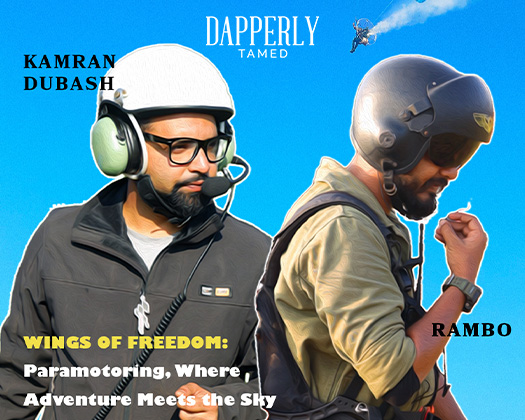Decoding the Vibrancy: A Groom's Guide to Punjabi Wedding Rituals
Introduction:
Punjabi weddings are renowned for their exuberance, grandeur, and an abundance of traditions that add cultural richness to the celebration. While the loud beats of the dhol and the lively bhangra performances steal the spotlight, there's a tapestry of rituals that weave together to create the vibrant fabric of a Punjabi wedding. In this comprehensive guide, we'll embark on a journey through the lens of a groom, unraveling the essence of each ritual and its significance.
Roka and Thaka:
Embracing the Alliance: The journey begins with the Roka, symbolizing the end of the search for a life partner. Families exchange tokens of sweets, dry fruits, and joy, officially fixing the alliance. Thaka follows, a ceremony signifying the couple's engagement, where they are showered with gifts and blessings.
Chunni Ceremony:
Symbolic Adornments: The groom's family presents the bride with gifts, including a red chunni or saree. The ceremony, known as Chunni Chadana, marks the acceptance and adornment of the bride with auspicious colors.
Sagai or Engagement:
Ring Exchange: Often aligned with Chunni Ceremony, Sagai is a joyous affair where rings are exchanged, and the couple is officially engaged. Families gather, celebrating with music and revelry.
Mehendi Ceremony:
Artistry and Celebration: The Mehendi ceremony is a vibrant showcase of intricate henna designs. While the bride's hands and feet take center stage, guests, including the groom, join in the celebration with their own Mehendi adornments.
Sangeet:
Musical Extravaganza: Sangeet, a celebration of music and dance, precedes the wedding day. The groom, family, and friends partake in lively performances, adding an extra layer of joy to the festivities.
Kangana Bandhna Ceremony:
Warding off Evil: On the wedding morning, a sacred thread (mouli) is tied to the groom's wrist, signifying protection from evil forces. The ritual is a prelude to the auspicious moments ahead.
Chhodha Chadana:
Bangles of Blessings: A ritualistic havan, where the bride receives a set of 21 bangles from her maternal uncle. The bangles, purified and covered, are worn post-wedding, signifying blessings and protection.
Kalire Ceremony:
Symbol of Fertility: Following the Chudha ceremony, the bride wears Kalire, traditionally gold-colored accessories. The bride shakes these over unmarried girls, symbolizing well-being, happiness, and the prospect of future weddings.
Haldi Ceremony:
Turmeric Bliss: A vibrant and fun-filled ceremony, where family members apply a mix of turmeric, rosewater, sandalwood, and mustard oil on the bride and groom. Laughter and merriment fill the air.
Ghara Ghardoli:
Seeking Blessings: After Haldi, the bride visits a temple, seeking blessings with a pitcher of holy water poured over her. A spiritual prelude to the sacred vows.
Sehrabandi:
Turban Tradition: The groom, adorned in a turban and sehera, assembles for a puja. The sehera, covering his face, signifies the solemnity of the upcoming wedding vows.
Ghodi Sajana and Ghodi Chadhna:
Baraat Revelry: The groom's grand entrance on a decorated mare marks the commencement of the baraat. Before the journey, the mare is fed a special mixture, symbolizing good fortune.
Agwaani and Milni:
Warm Welcomes: A heartwarming ceremony where the groom's family is welcomed by the bride's family. An exchange of greetings and aarti may follow, fostering camaraderie.
Varmala:
Garland Exchange: A simple yet significant exchange of garlands between the bride and groom, signifying mutual acceptance and the beginning of wedding rituals.
Madhuperk/Madhuperka:
Vedic Traditions: Post Varmaala, the groom performs a Vedic ritual, sprinkling water and sipping a sherbet made of clarified butter, curd, honey, and essence.
Kanyadaan:
Emotional Bond: The father of the bride entrusts his daughter's hand to the groom, seeking love, care, and respect. A poignant moment of familial ties.
Mangal Phere:
Sacred Circles: The couple circles the sacred fire seven times, exchanging vows with each round. The priest recites mantras, and upon completion, declares them married.
Sindoor Daan:
Symbol of Matrimony: Following the pheras, the groom anoints the bride's forehead with sindoor, symbolizing the beginning of a married life that spans seven lifetimes.
Joota Chupai:
Playful Ransom: A lighthearted tradition where the bride's sisters hide the groom's shoes, demanding a playful ransom before returning them. Negotiations ensue with laughter and jest.
Vidaai:
Bidding Adieu: The poignant moment when the bride bids farewell to her family, symbolized by throwing rice over her shoulder. A heartfelt expression of gratitude as she embarks on her new journey.
Paani Bharna:
Aarti of Welcome: Upon reaching the groom's home, the bride's mother-in-law performs an aarti with a pitcher of water. Symbolic rituals follow, marking the bride's entry into her new home.
Mooh Dikhai Ki Rasm:
Unveiling Radiance: The bride's veil is lifted, revealing her face to family and friends. Blessings, gifts, and cash shower upon her, celebrating her radiant presence.
Reception Ceremony:
Grand Celebration: A lavish affair hosted by the groom's family, filled with sumptuous meals, dance, and joyous meetings. A moment to extend celebrations beyond the wedding rituals.
Pag Phera:
A day after the wedding, the bride's family invites the newlyweds Post-Wedding Gathering:for a gathering or dinner, fostering continued camaraderie.
Conclusion:
As a groom navigating the tapestry of Punjabi wedding rituals, each ceremony unfolds a unique blend of tradition, joy, and symbolism. From the exuberant pre-wedding celebrations to the solemn moments of the pheras, a Punjabi wedding is a kaleidoscope of emotions and cultural richness, leaving indelible memories for the newlyweds and their families.








